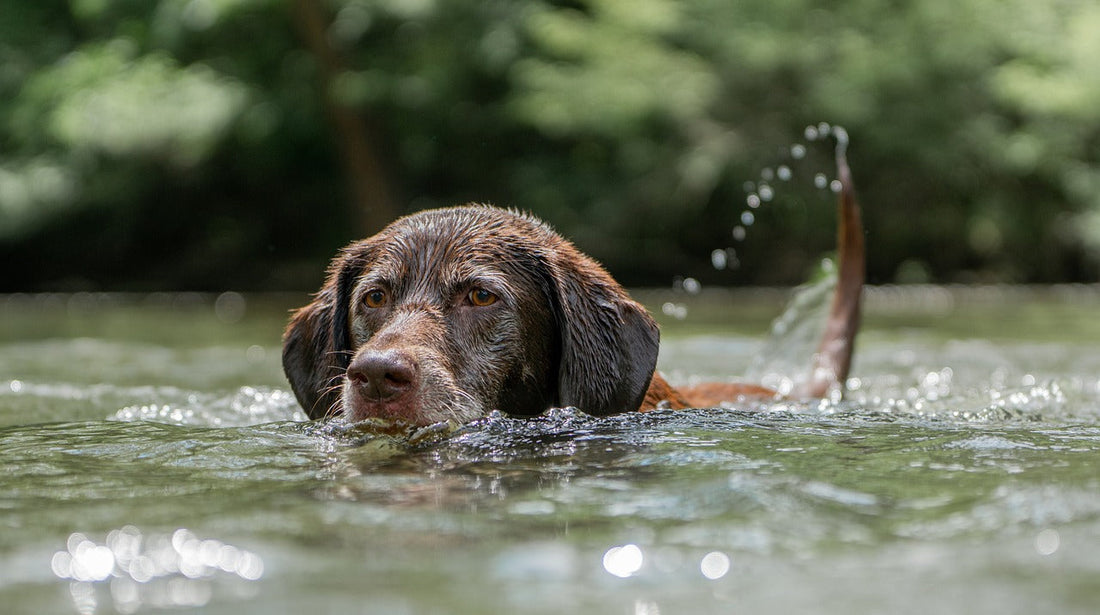Swimming is not only great exercise for your dog, but it’s also a fun activity that can help strengthen your bond. While some dogs naturally love water, others may feel uncertain or fearful. With patience and the right techniques, you can teach your dog to swim safely and confidently. Here’s a guide to help you introduce your dog to swimming, whether they’re a water-loving natural or a bit more hesitant.
1. Start Slow and Build Comfort
Before you even think about putting your dog in the water, it’s important to ensure they’re comfortable being around it.
-
Introduce Water Gradually: Begin by taking your dog to a calm, shallow area where they can wade in and out of the water at their own pace. Let them sniff, splash, and get familiar with the sensation of water on their paws. You can also try filling a kiddie pool with water if you don’t have access to a natural water source.
-
Positive Reinforcement: Use treats and praise to create a positive association with the water. If your dog shows curiosity or steps in, reward them immediately. This will help build their confidence and encourage them to explore the water further.
2. Use a Leash for Control
Even if your dog is comfortable in the shallow areas, a leash will help you maintain control and guide them gently into deeper water. It’s also a safety measure in case your dog gets overwhelmed and tries to dart out of the water.
- Start in Shallow Water: Keep your dog on the leash and gradually guide them into shallow water. Allow them to get used to the sensation of the water around their legs. Some dogs will naturally paddle instinctively, while others may need more time to build confidence.
3. Make the First Swim a Positive Experience
The first time your dog starts swimming may be a bit daunting, but it’s important to remain calm and reassuring.
-
Gradually Increase Depth: As your dog becomes more comfortable, slowly guide them into deeper water. Keep the experience gradual, and allow your dog to go at their own pace. Don’t force them into deeper water, as this can lead to fear and negative associations with swimming.
-
Support Them: If you’re in a lake or pool, offer some support by holding your dog’s body in the water. Gently support their chest and belly while they paddle to encourage them to swim without fear.
4. Use a Dog Life Jacket for Safety
If your dog is a beginner swimmer, a dog life jacket can be an excellent tool. It provides extra buoyancy and ensures that your dog feels secure in the water.
-
Choosing the Right Life Jacket: When selecting a life jacket, make sure it fits snugly and comfortably. It should allow your dog to move freely but still provide support. Look for a jacket with a handle on top, so you can easily help your dog out of the water if needed.
-
Acclimatise Your Dog to the Life Jacket: Before jumping into the water, let your dog wear the life jacket around the house or yard for a while so they get used to the feel. Reward them with treats and praise to make the experience more enjoyable.
5. Use Encouragement and Positive Reinforcement
As with any new skill, your dog will respond best to encouragement. Keep the experience fun and rewarding to build their confidence and make them want to keep swimming.
-
Praise and Treats: When your dog takes a step in the right direction—whether it’s stepping into the water or taking their first paddle—praise them and offer a treat. The more positive reinforcement they receive, the more likely they are to enjoy the activity.
-
Make it Fun: Use toys or balls that float to encourage your dog to swim and retrieve them. Some dogs find it easier to swim if there’s a fun incentive, like fetching a toy.
6. Keep Sessions Short and Sweet
It’s important not to overwhelm your dog during the initial stages of learning to swim. Keep the first few sessions short and focused on positive experiences.
-
Gradual Sessions: Start with a few minutes of swimming, and increase the time gradually as your dog gains confidence and strength. Dogs can tire easily in the water, so keep an eye on them to prevent exhaustion.
-
Rest Breaks: Allow your dog to rest after a swim session, and always keep fresh water available for them to drink. If your dog seems tired or stressed, it’s time to wrap up the session for the day.
7. Be Patient
Some dogs may take to swimming naturally, while others may need more time to adjust. It’s important to be patient and go at your dog’s pace. Forcing them into deeper water or expecting them to swim immediately can lead to fear and setbacks.
- Understand Your Dog’s Limits: Not all dogs are natural swimmers, and some may never feel comfortable in the water. That’s okay! Respect your dog’s boundaries and provide alternatives for exercise, such as walking, running, or playing in the yard.
8. Swimming Location Matters
If you’re teaching your dog to swim in a natural body of water, like a lake, river, or ocean, choose a safe, calm area with no strong currents.
-
Calm Water: Avoid locations with waves, strong currents, or deep water until your dog becomes a confident swimmer. Choose a place with a gentle slope and shallow areas where your dog can gradually get accustomed to the water.
-
Clean Water: Ensure the water is clean and free of harmful pollutants or bacteria that could make your dog sick. Avoid areas where there may be dangerous wildlife, sharp rocks, or debris.
9. Monitor Your Dog’s Health
Swimming is an excellent full-body workout for your dog, but it’s important to watch for signs of fatigue or distress, especially during the first few swims.
-
Check for Signs of Fatigue: If your dog starts panting heavily, slowing down, or seems disoriented, it’s time to take a break. Make sure your dog has access to fresh water and shade.
-
Ear Care: After swimming, dry your dog’s ears thoroughly, especially if they have floppy ears. Moisture in the ears can lead to infections, so keep them clean and dry after each swim.
10. Keep Swimming a Fun, Bonding Activity
The goal of teaching your dog to swim is to create a positive, enjoyable experience for both of you. Swimming can be a great way to keep your dog physically active and mentally engaged, while also enhancing your bond through shared fun and learning.
Conclusion
Teaching your dog to swim can be a rewarding experience that strengthens your relationship while providing them with a fun, healthy activity. Whether your dog is a natural water lover or needs a bit of encouragement, remember that patience, positive reinforcement, and safety are key to ensuring that swimming becomes an enjoyable part of their routine. With these tips, you can create a safe, fun, and fulfilling swimming experience for your furry companion. Happy swimming!

